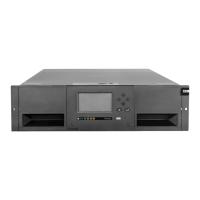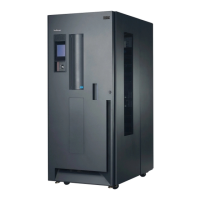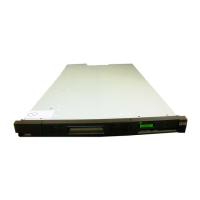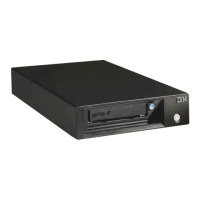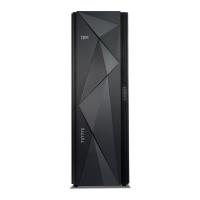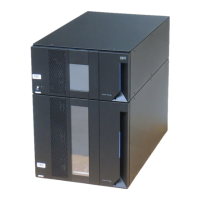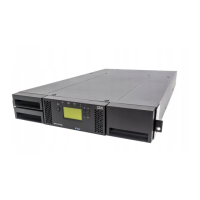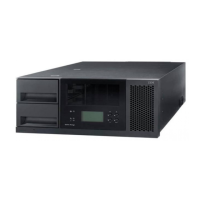economy WORM (JR), WORM (JW), extended WORM (JX), advanced type C
WORM (JY), advanced type D WORM (JZ), cleaning, or diagnostic cartridge.
Figure 48 on page 147 shows a sample bar code label for the IBM TotalStorage 3592
Enterprise Tape Cartridge.
You can order tape cartridges with the labels included, or you can order custom
labels. The labels have a peel-and-stick backing. The bar code must meet
predefined specifications. The recommended specifications include (but are not
limited to):
v Eight uppercase alphanumeric characters, where the last two characters must be
JA, JB, JC, JD, JJ, JK, JL, JR, JW, JX, JY, or JZ.
v Label and printing to be non-glossy
v Nominal narrow line or space width of 0.500 mm (0.019 in.)
v Wide to narrow ratio of 2.75:1
v Minimum bar length of 7.0 mm (0.27 in.)
To determine the complete specifications of the bar code and the bar code label, go
to Barcode Label Specification for use with 3592 Tape Media and download the
PDF file of the specification, Label Specification for IBM 3592 Cartridges when used in
IBM Libraries. You can also contact your IBM sales representative for this
specification.
When attaching a bar code label to a tape cartridge, place the label only in the
recessed bar code label area (see Figure 48 on page 147). A label that extends
outside of the recessed area can cause loading problems in the drive or the library.
Attention: Do not place any type of mark on the white space at either end of the
bar code. A mark in this area may prevent the TS4500 tape library from reading
the label.
You can configure the library so that it reports to the server all eight characters of
the VOLSER on the bar code label or only the first six characters using the
modifyVolserReporting CLI command.
Note: If you suspect that the library is having problems reading the bar code
labels, an IBM service representative can use the TS4500 management GUI to slow
the scanner speed as part of problem determination.
To order bar code labels, see “Ordering 3592 bar code labels” on page 159.
146 IBM TS4500: Introduction and Planning Guide
